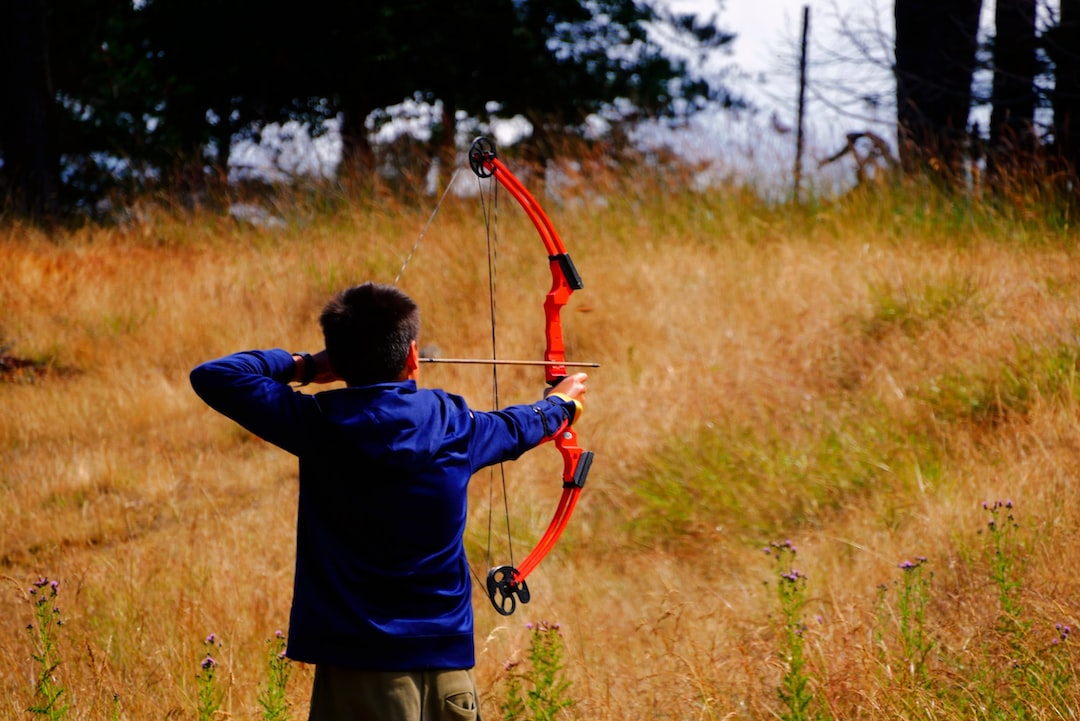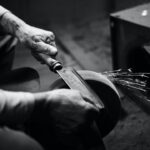Are you a beginner hunter looking for the best bow to get started?
Deciding which bow is right for you can be a daunting task, but our guide will help you find the perfect beginner hunting bow.
But don’t worry. We’ve got your back with our guide on finding the best beginner bows for hunting. In this piece, we’ll look at how to pick and prepare your bow, the fundamentals of archery shooting and safety tips for a fun outing.
So if you’re ready to take your first steps into archery hunting, read on.
Choosing the Right Bow for You
Selecting the ideal bow necessitates taking into account a few essential elements. First, let’s look at the different types of bows available. Recurve bows have been around since ancient times and are typically used in Olympic archery competitions.
Compound bows offer more power than recurves due to their pulley system and cams which give them an advantage when shooting long distances or heavy draw weights. Longbows are simpler designs that require more skill but can be extremely accurate when mastered correctly.
Draw weight is another important factor when selecting a bow. Draw weight determines how much force you need to pull back on the string in order to fire an arrow effectively. It’s best to start with something lighter until your form and technique improve before increasing draw weight gradually over time as your skills progress.
You should also take into account your body size and strength level as well as any physical limitations you may have such as arthritis or injury recovery when determining draw weight so that you don’t strain yourself unnecessarily while shooting arrows accurately from your chosen bow type
The length of the bow is also important because it affects accuracy and stability while aiming at targets from varying distances away from you.
The longer the bow, the easier it will be for beginners who lack muscle control or experience in shooting arrows accurately yet still want good results with minimal effort expended on their part during practice sessions or hunting trips out in nature respectively speaking .
Once you’ve determined what type of bow works best for you based on these three criteria (types, draw weight & length), then accessories such as sights, stabilizers, quivers etc., can be added later depending upon budget considerations along with personal preference.
These items help make sure that each shot fired off goes exactly where intended by providing additional support while aiming downrange towards targets placed further away and also adds extra style points.
So whether it’s recreational target practice fun at home, competitive tournament events abroad or actual big game hunting expeditions out west – having all this gear definitely helps ensure success no matter what kind of activity is being pursued outdoors.
Selecting the correct bow for your needs is essential to becoming an accomplished hunter. With the proper setup and tuning, your beginner bow can help you become a master of hunting with accuracy and precision. Now that we’ve looked at selecting the right bow, let’s look into configuring it correctly so you can shoot with precision and accuracy.
Setting Up Your Bow
Assembling the Bow:
When it comes to assembling your bow, it’s important to follow manufacturer instructions closely. Pay attention to details such as tightening screws and bolts securely, ensuring that all parts are in place, and checking for any wear or damage. Before shooting, thoroughly inspect the bow to ensure it is properly assembled and ready for use.
Tuning the Bow:
Tuning is a critical step in setting up your bow properly. This involves making adjustments to things like draw length, brace height and arrow rest position so that they match your particular shooting style. It also helps ensure accuracy and consistency when shooting at various distances.
A good way to check if you have achieved optimal tuning is by doing paper tuning tests with arrows at different distances from the target – this will help you identify any issues with how your bow is set up before taking it out into the field for hunting or target practice.
Sighting In Your Bow:
Sighting in refers to adjusting sight pins until you consistently hit targets at various distances using arrows shot from a fixed position on an archery range or other flat surface area (e.g., backyard). This process can be time consuming but is essential for achieving accurate shots while hunting or competing in tournaments since even small errors can cause large variations in where an arrow lands compared to its intended destination.
Adjustments should be made slowly and carefully – never rush through this process.
Choosing compatible arrows and broadheads for your specific bow setup will greatly affect performance on the range or in the field. For example, heavier bows require heavier arrows whereas lighter bows need lighter ones; similarly, certain types of broadheads work better with certain kinds of arrows depending on their weight distribution patterns etc.
It is important to do research beforehand so that you know what type of arrow/broadhead combination best suits your needs – this could mean trial-and-error testing different combinations until finding one that works well together.
To ensure that your bow is set up correctly, it’s important to assemble the bow, tune it and sight in properly. With a proper setup complete, you are now ready to learn some basic archery techniques for beginners.
Basic Archery Techniques for Beginners
Having the right stance and posture is key to shooting accurately with a bow. Stand with feet shoulder-width apart and knees slightly bent, creating a balanced stance for accurate shooting. Your arms should be relaxed but firm, and your shoulders should be square to the target.
Keep your head up and chin tucked while looking down the arrow at the target. This will help you maintain proper form throughout each shot.
Next, it’s important to establish anchor points on your face that will stay consistent every time you shoot. Common anchor points include touching your jawbone or nose with one hand, pulling back on both sides of your face near your ears or against your cheekbones, or placing three fingers under one eye as a reference point for where you draw back from each time.
These anchor points provide consistency in aiming so that when combined with good form they can lead to accurate shots every time you release an arrow from the bowstring.
Once these basics are established it’s time to aim. With practice this skill becomes easier over time as muscle memory develops; however beginners need patience when learning how to line up their sights correctly for each shot they take – don’t rush it.
Once sighted in properly draw back slowly until reaching full draw then pause briefly before releasing the arrow smoothly towards its intended target without jerking or flinching away during release as this could affect accuracy of the shot negatively.
Finally, follow through after releasing by maintaining focus on what lies beyond where you were aiming while allowing yourself enough recovery time between shots so that fatigue doesn’t set in too quickly – especially if hunting game animals such as deer which require multiple arrows per hunt.
By following these simple steps consistently, beginners can learn basic archery techniques quickly and efficiently without getting overwhelmed by all there is to know about shooting a bow accurately – happy hunting.
Archery novices can be sure they’re ready to hunt responsibly and efficiently once they’ve acquired the fundamentals. To ensure a successful hunting experience, it is important to take necessary safety precautions when using a bow for hunting.
Safety Tips for Hunting with a Bow
When using a bow for hunting, safety equipment such as gloves, arm guards, chest pads and eye protection should be worn to protect against potential injuries from string slap or misfires. This helps prevent any injury from string slap or misfires.
It is also essential to know your target area before shooting. Be aware of any potential obstacles or hazards that may be present in the area where you are shooting or hunting. Respect wildlife by understanding their behavior patterns and being mindful of their presence in an area before shooting an arrow into it.
Practicing safe shooting habits is paramount when using a bow for hunting purposes; always aim away from people or animals when practicing or hunting with a bow. When it comes to maintenance tips for beginner bows, cleaning and lubricating should be done regularly in order to keep them functioning properly and efficiently over time.
Check for damage on the bow after each use and replace parts if necessary; this will help ensure accuracy while aiming at targets during practice sessions as well as hunts. Storing your bow correctly can help extend its life span; store it in a dry place out of direct sunlight and extreme temperatures when not in use.
Tuning your bow periodically ensures that arrows fly straight towards intended targets during hunts instead of veering off course due to improper tension settings on the strings of the bow itself.
By following these safety tips while using a bow for recreational activities such as archery competitions or big game hunts, you can have peace of mind knowing that you are taking all necessary precautions while pursuing your passion outdoors.
FAQs in Relation to Best Beginner Bows for Hunting
What kind of bow is best for beginner hunters?
For beginner hunters, the best bow to start with is a recurve bow. Recurve bows are easier to use and require less strength than compound bows. Recurve bows are often preferred by new hunters due to their lightweight design, which is beneficial for those with undeveloped arm strength.
Additionally, recurves do not require any additional equipment such as sights or stabilizers which can make learning how to shoot more difficult for novice archers. Finally, they are usually cheaper than other types of bows so it’s an affordable option when starting out.
Which bow is most recommended for hunting?
The most recommended bow for hunting is the compound bow. Compound bows are designed to offer maximum power, accuracy, and efficiency when shooting arrows at game animals. They feature a series of pulleys that help store energy as you draw back on the string, which helps increase your arrow’s speed and distance while also reducing fatigue in your arms from extended use.
The combination of these elements renders the compound bow a great selection for hunters seeking to enhance their likelihood of success on hunts.
What is the best bow weight for beginner?
For beginner hunters, the best bow weight is usually between 20-40 pounds. This range allows for enough draw weight to launch an arrow with adequate force, while still being manageable and comfortable for those new to archery. Heavier bows can be more difficult to aim accurately and require more strength to pull back the string.
Additionally, lighter bows tend not to have as much power or accuracy when shooting at longer distances. It is important that a beginner hunter finds a bow that fits their size and skill level in order to ensure they are successful on their hunt.
What is a good starter bow for adults?
A great starter bow for adults is the Diamond Infinite Edge Pro. It has an adjustable draw weight from 5 to 70 pounds, making it ideal for any size and strength of adult archer. The Infinite Edge Pro also features a smooth draw cycle and excellent accuracy with its single cam system.
Its light-weight design makes it comfortable to carry in the field, while still providing enough power for hunting game at longer distances. Finally, this bow is pre-strung and ready for shooting from the get-go – making it an ideal choice for both amateur and veteran hunters.
Conclusion
Bow-hunting can be a thrilling and fulfilling experience, yet it’s critical to pick the right bow for your proficiency. Ensure that your bow of choice is tailored to you, has all the necessary features for success in hunting, and falls within a budget suitable for your level.
With practice and safety precautions in mind, finding the best beginner bows for hunting can be easy.



